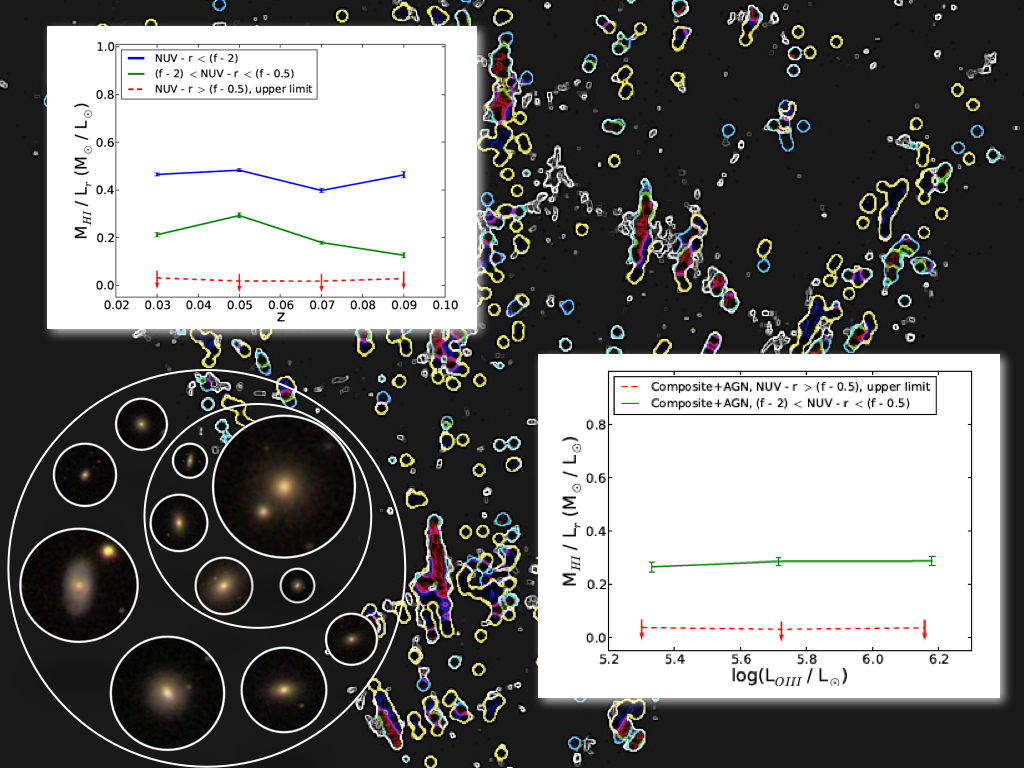Daily Image
12-06-2015Tracing the gas with a stacking experiment with the WSRT
| Submitter: | Katinka Gereb, Raffaella Morganti, Tom Oosterloo |
| Description: | One way in which the upcoming large radio surveys (line and continuum) will be used is by stacking the signal of as many as possible galaxies. This will increase the sensitivity and will allow us to derive statistical properties of classes of objects even if the individual objects are undetected. Stacking is a powerful technique to study trends between, for example, the presence of the gas and the colour, star-formation, nuclear activity of the galaxies. This technique has been extensively applied to data obtained by the Westerbork Synthesis Radio Telescope in the PhD work of Katinka Gereb (Daily Image 08-10-2014, see also Daily Image 26-11-2013 and 20-08-2014). The latest results on the characterization of the atomic neutral hydrogen (HI) content of a sample of about 1600 galaxies (with redshift up to z < 0.15) are now published in a paper accepted in Astronomy & Astrophysics: "From star-forming galaxies to AGN: the global HI content from a stacking experiment" K. Gereb, R. Morganti, T. Oosterloo, L. Hoppmann, L. Staveley-Smith, http://arxiv.org/abs/1505.03622 We find that the HI content is more dependent on colours, with a decreasing amount of gas going from so-called "blue cloud", i.e. galaxies dominated by relatively young stars, to "green valley" and only an upper limit for the "red sequence" where only old stars are present, and less on ionization properties of the gas in the galaxies. This is illustrated in the plot on the left. This means that regardless of the presence of an optical active nucleus (based on optical ionization line diagnostics), green-valley galaxies always show HI, whereas red galaxies only produce an upper limit (as illustrated in the plot on the right). These results suggest that "feedback" from optical active nuclei, the so called "feedback", is not the (main) reason for depleting the large-scale gas reservoirs and quench star formation. We also find that the radio emission in galaxies bright in infrared (IR), stems from enhanced star formation, in agreement with the finding that this group is detected in HI. However, IR early-type galaxies lack any sign of HI gas and star formation activity, suggesting that radio AGN are likely to be the source of radio emission in this population. This study has been used as test case and to set up the necessary software and explore the possibilities in preparation to the surveys that will be done by Apertif. |
| Copyright: | ASTRON |
| Tweet |  |
